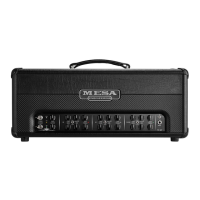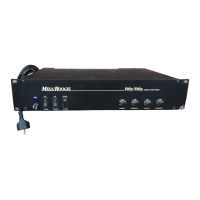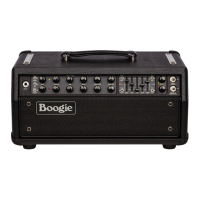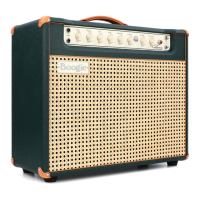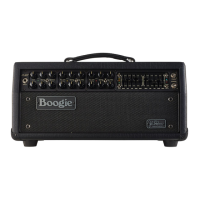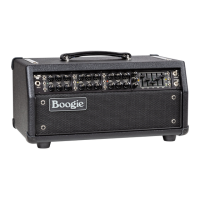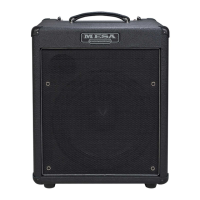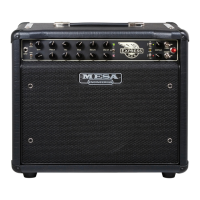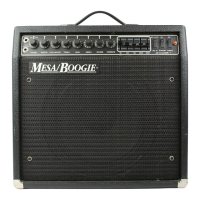PAGE 8
DYNAMIC VOICE
PRESENCEMASTERLEAD 2 DRIVE
GAIN TREBLE MIDDLE BASS
LEAD 1 DRIVE
4
0
1
23
5
6 7 8 9
GAIN: This is by far the most critical and powerful of the controls in TriAxis. It not only determines the overall gain
amount, shape and sensitivity of each mode...but it is sort of a Tone control as well. Generally speaking, whatever
is dialed here ultimately determines the mode’s personality. Set low, it allows “cleaner” brighter sounds with
enhanced dynamic response, especially in the higher frequencies. Set high the whole personality of the mode
becomes fatter and more overdriven. In TriAxis we worked hard to make sure the entire range of the Gain is us-
able and more importantly, musical. Don’t think for a moment that this simple layout limits you as to the amount and
texture of gain. Long neurotic hours were spent to ensure the frequencies, as well as the ranges, of gain available
here were stylistically accurate. It’s probably good to mention here that most of the great sounds can be found
by setting the GAIN control moderately, especially in the 6 Lead modes. For example, somewhere between 2.0
and 8.0 in the Lead modes, and between 3.0 and 8.0 in the Rhythm modes. This reduces the likelihood of pesky tube microphonic
problems occurring while at the same time making the modes easier to balance with each other in regards to volume and effects
send level strength.
TREBLE: As with most all tube guitar amplifier, the TREBLE control is the strongest of the three tone controls.
Its’ setting in the TriAxis determines the blend and strength of the MIDDLE and BASS controls. Set high, it is the
dominant control, minimizing the amount of MID and BASS possible in the mix. Set low the TREBLE becomes the
recessive control and a warmer, darker blend is produced. Dial with care. Subtle tweaking of this control tends to
produce the best results.
MID: The MID control determines midrange punch and boldness in lower gain sounds and a smooth “vocal” blend
in high gain sounds. It can be very effective in acting as a “cut through the band control” in certain situations. Dial
to taste, remembering that the setting of the TREBLE control greatly effects its’ strength. However...there is an
exception...in the LEAD 1 Red mode the MID control is extremely powerful. Its action may be likened to that
of the TREBLE control in all the other modes. The MID can completely re-shape the entire personality of this pre-
tone gain mode simply by setting it either very low or very high. This difference is because in the other 7 modes, a
standard Mid value pot and circuit placement scheme is in place.
Setting the MID control very low in this mode scoops all the attack and lends a spongy liquid character to the sound. This type of set-
ting works very well for single note work or very low gain rhythm playing. The strings will seem easier to play if the Mids are kept low
in the LEAD 1 Red mode. Setting the MID control high in LEAD 1 Red adds attack and aggression. In this range of settings, the GAIN
and LEAD DRIVE controls can be set relatively high before any mush or lack of articulation is noticed. This type of MID setting also
helps the bottom end stay tight - even at rather high BASS control settings. Harmonic “chirping” and “held” note “harmonic leaping”
are easier to obtain with higher settings of the MID control.

